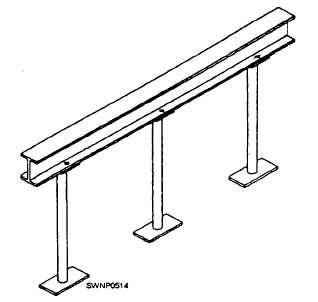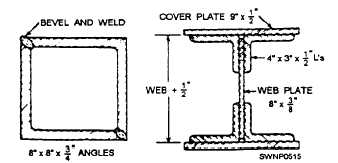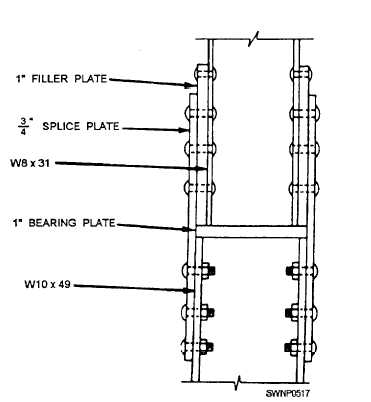
Figure 3-10. - Girder span on pipe columns.

Figure 3-11. - Built-up column section.
such that the joints or splices are 1 1/2 to 2 feet above the second and succeeding story levels. This will ensure that the splice connections are situated well above the girder or beam connections so that they do not interfere with other second story work.
Column splices are joined together by splice plates which are bolted, riveted, or welded to the column flanges, or in special cases, to the webs as well. If the members are the same size, it is common practice to butt one end directly to the other and fasten the splice plates over the joint, as illustrated in figure 3-12. When the column size is reduced at the joint, a plate is used between the two ends to provide bearing, and filler plates are used between the splice plates and the smaller column flanges (fig. 3-13).
GIRDERS
Girders are the primary horizontal members of a steel frame structure. They span from column to

Figure 3-12.vColumn splice with no size change.

Figure 3-13. - Column splice with change in column size.
column and are usually connected on top of the columns with CAP PLATES (bearing connections), as shown in figure 3-14. An alternate method is the seated connection (fig. 3-15). The girder is attached to the flange of the column using angles, with one leg extended along the girder flange and the other against the column. The function of the girders is to support the intermediate floor beams.
Continue Reading